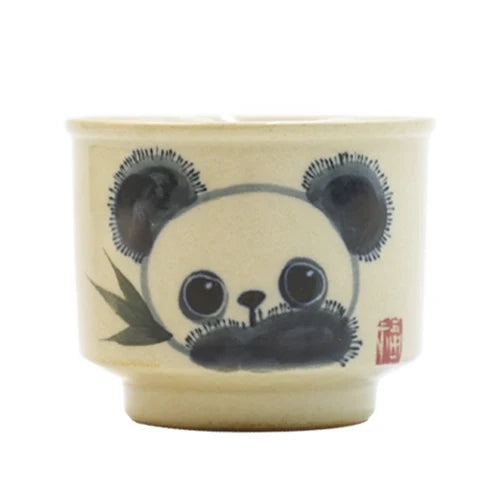Чай улун славится своим уникальным и насыщенным ароматом. Некоторые могут задаться вопросом, не исходит ли аромат чая улун от искусственных ароматизаторов. Нет, отличительный аромат чая улун определяется различными факторами, такими как сорт чайного дерева, стандарты сбора свежих листьев и процесс производства.
Разновидность чайного дерева
1. «Сортовой аромат» чая Улун
Различия в свежих листьях и характеристиках роста различных сортов чайного дерева определяют уникальные ароматические качества листового чая улун . Многие известные чаи улун часто называют в честь сорта чайного дерева из-за их особого аромата.
«Сортовой аромат» чая улун довольно заметен. Например, у Да Хун Пао есть «каменистое очарование», у Те Гуань Инь есть «музыкальное очарование», а у Жоу Гуй есть «аромат корицы». Улун с «сортовым ароматом» часто считается классикой и является прекрасным рождественским или новогодним подарком.
2.Характеристики сортов чайного дерева улун
Большинство сортов чайного дерева Улун имеют листья среднего или большого размера с толстым восковым слоем на поверхности листа. В процессе обработки этот воск может трансформироваться в ароматические вещества, способствуя аромату чая Улун.
Помимо крупнолистовых сортов улуна, нижняя эпидермис листьев чайного дерева содержит железистые чешуйки, которые также могут выделять ароматические вещества, добавляя еще одно измерение аромату чая улун.
Кроме того, зрелые листья содержат липидные частицы, которые отсутствуют в нежных побегах отдельной почки и листа, что обеспечивает материальную основу для формирования насыщенного аромата при первичной обработке чая Улун.
Стандарты свежих листьев
1. Свежие листья чая улун требуют определенного уровня зрелости.
Качество свежих листьев напрямую влияет на общее качество чая Улун.
Требования к свежим листьям в листовом чае Улун отличаются от требований к листовому зеленому чаю . Чай Улун требует определенного уровня зрелости, а процесс сбора включает в себя «сбор с открытой гранью». Когда листья находятся в состоянии «с открытой гранью», содержание ароматических компонентов, таких как бензальдегид и линалоол, выше. Кроме того, он содержит больше аминокислот, каротиноидов и других соединений.
2. Свежие листья чая Улун не должны быть слишком нежными или слишком старыми.
Процессы увядания и окисления способствуют образованию альдегидных соединений, усиливающих аромат чая Улун. Если свежие листья слишком нежные, содержание катехинов и кофеина в листьях будет чрезмерно высоким. Веществ-предшественников ароматических соединений, таких как сахара и эфирные экстракты, будет относительно низким, что приведет к получению чая с более слабым ароматом и горьким вкусом, не соответствующего требованиям к качеству чая Улун.
Конечно, свежий листовой материал не должен быть слишком старым. Чай, приготовленный из перезрелых листьев, будет иметь грубый вид, не будет содержать внутренних веществ, будет иметь более низкое качество из-за низкого уровня ароматических соединений и более высокого содержания целлюлозы, что усложнит достижение желаемого сильного аромата и мягкого вкуса, характерного для чая Улун.
Технология обработки чая
1. Цзоцин
Цзоцин — характерный процесс в производстве чая Улун, и это ключевой шаг в формировании качественного стиля чая Улун, которому не подвергается другой листовой чай . Уникальный аромат чая Улун также развивается во время этого процесса. Поэтому фермеры часто говорят, что они «поворачивают реку и опрокидывают море, чтобы произвести Улун». Завяливание включает в себя два этапа: Яоцин (встряхивание) и Лянцин (охлаждение), которые выполняются попеременно.
Яоцин (тряска): Проще говоря, это непрерывное встряхивание завяленных чайных листьев в бамбуковом сите. Чайные листья танцуют и катятся внутри сита, вызывая трение и столкновение между листьями и стенками сита, а также между самими листьями.
Лянцин (охлаждение): После яоцин (встряхивания) чайные листья тонким слоем рассыпают на бамбуковом сите и оставляют на некоторое время.
Цели этих операций двояки. Во-первых, повредить клеточные стенки, увеличить соотношение чайных экстрактов в листьях и стеблях и усилить аромат чая. Во-вторых, вызвать легкую ферментацию в чайных листьях, создавая сложный аромат. Без чередующихся процессов Яоцин (встряхивание) и Лянцин (охлаждение), выполняемых от трех до пяти раз, чаю Улун сложно развить сильный аромат, обладая при этом различными цветочными и фруктовыми качествами. Именно этот сложный и замысловатый процесс завяливания позволяет многим классическим чаям Улун, таким как Те Гуаньинь, Да Хун Пао и Фэнхуан Даньцун, считаться одними из лучших сортов листового чая .
2.Обжарка
По сравнению с обжаркой зеленого чая обжарка чая улун не только позволяет высушить и остановить окисление сырых чайных листьев, но и предполагает дальнейшую обработку листьев.
Обжарка чая улун также известна как «выпечка». Она включает обжарку чайных листьев для управления ферментацией путем изменения содержания влаги в листьях. Этот процесс также приводит к трансформации таких веществ, как катехины и кофеин, в конечном итоге регулируя и контролируя конечный аромат чая. Это фундаментальный принцип обжарки чая улун.
В ходе этого процесса степень обжарки меняется, что влияет на конечный аромат. Для слабо обжаренных чаев улун, таких как Тегуаньинь , характерен тонкий и чистый вкус. Для умеренно обжаренных чаев, таких как Да Хун Пао , изначально присутствует «аромат огня», который может рассеяться через некоторое время или после нескольких заварок. Только тогда можно ощутить сильный аромат, сладость и различные цветочные и фруктовые ноты, характерные для чая улун. Чтобы оценить разницу в уровнях обжарки чая улун, можно попробовать сравнить образцы чая , что позволит лучше понять нюансы и прелести, которые в нем присутствуют.
Именно уникальные сорта чайных деревьев, особые стандарты сбора и изысканное мастерство изготовления чая Улун способствуют его отличительному и богатому аромату, включающему ноты свежести, цветочные, фруктовые, медовые и цветочно-фруктовые ароматы. Надеемся, эта статья поможет читателям глубже понять чай Улун, что позволит им лучше насладиться и оценить этот уникальный листовой чай.










































































